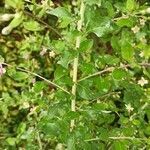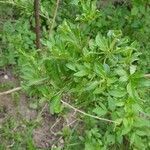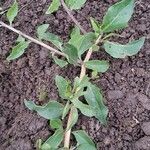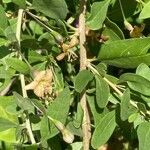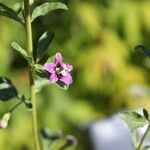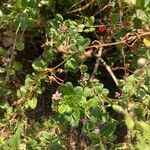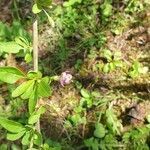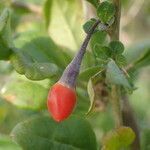A spiny deciduous shrub. It grows 4.5 m high. The branches are stiff, straight and unbranched. The branches have long thorns. These are where the leaves sprout from the stem. There are only a few leaves. The leaves are oval and vary between 2-6 cm long. They are dark green. The flowers are purplish. They are tube shaped and held in clusters of 1 to 4. The fruit are reddish-orange berries. They hang down. The fruit are 25 mm long.
